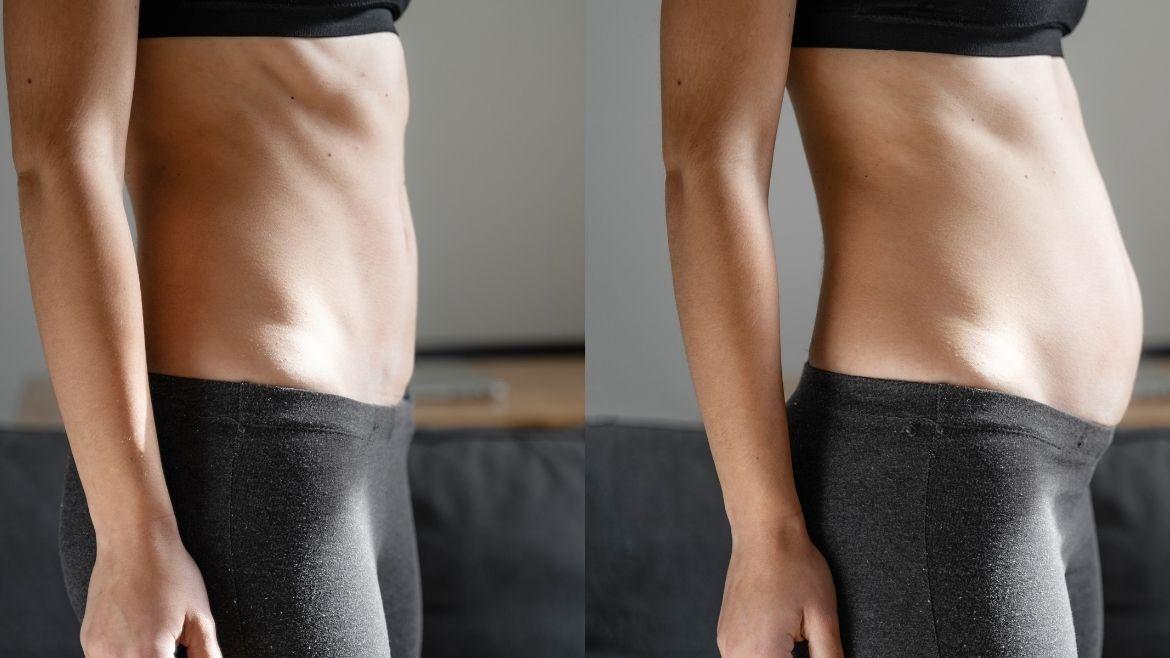Abdominoplasty involves surgical removal of excess skin and underlying fat and tightening of abdominal muscles to provide a contoured abdominal profile.
Loose, unsightly bulges in the waist and tummy area are a common problem in women, especially after childbirth. Many men also experience sagging skin, or some may have exercise-resistant fat deposits around the stomach or abdominal area. This condition occurs due to loss of skin elasticity, weakening of the abdominal muscles caused by certain factors like aging, sudden weight loss, and bariatric surgery and pregnancy.
These problems can only be resolved through the surgery called “Tummy Tuck” or “Abdominoplasty.” This procedure involves surgical removal of excess skin and underlying fat and tightening of abdominal muscles to provide a contoured abdominal profile. Stretch marks in the lower abdomen can also be reduced dramatically by this procedure.
Benefits of Tummy Tuck Surgery
- This procedure helps achieve the desired tummy shape as it involves liposuction that removes fat, and surgical excision of loose hanging skin.
- Abdominal muscles can be strengthened and tightened through a tummy tuck that reduces back pain because it helps the patient to stand up a little straighter.
- The weakened abdominal muscles trigger ventral hernias. This condition can be overcome by combining appendectomy (to treat hernias) with a tummy tuck procedure.
- The improved abdominal profile reinvigorates people’s tolerance for physical activities like exercise, walking, running, and aerobics.
Anesthesia: The procedure is usually performed under general anesthesia.
Duration: Short duration, no admission required.
Procedure: The procedure involves the excision of excess skin along with underlying tissue and repositioning of the umbilicus. Depending on the extent of laxity, the procedure can be a mini-abdominoplasty where the umbilicus is not repositioned, total abdominoplasty with the recreation of the umbilicus, or an extended tummy tuck. The final scar following surgery is hidden in the panty line, as in a cesarean section.
Types of Tummy Tuck
People have different reasons for undergoing tummy tuck surgery. The surgeon will decide the type of tummy tuck according to the need of the patient. The surgery provides desired natural-looking results with minimal scarring. There are the following types of tummy tucks:
1. Mini-Tummy Tuck
This procedure involves less extensive surgery to improve only the lower belly. So, this procedure is the best option for people who want to treat loose skin and stretch marks on the lower belly area. During this procedure, a single cut is created just above the pubic area that triggers the tightening of loose muscles and removal of excess skin and provides a smooth and flat abdominal wall. This procedure results in a scar that looks like a thin horizontal line. It helps provide a flatter, slimmer lower abdomen. This procedure is quick, with less recovery time.
2. Classic or Full Tummy Tuck
This method helps improve both the upper and lower areas of the abdomen. This method is best for people who are facing excess skin folds or roundness. A full tummy tuck addresses the overall abdominal wall and provides the best results. During this procedure, a U-shaped or horizontal cut is made on the upper area of the pubic mound that removes excess skin and tightens the abdominal muscles. A second cut can be created for removing excess skin from the upper belly button to give natural-looking results. This procedure results in a scar that appears similar to a mini-tummy tuck. However, it may be longer and present from hip to hip.
3. Extended Tummy Tuck
This procedure helps improve the upper and lower abdominal flanks. This procedure is best for people who have excess sagging skin due to excess weight loss and for women who have abdominal muscles with less elasticity due to multiple pregnancies. During this procedure, long incisions are created to remove excess saggy skin from the upper and lower abdomen as well as the flanks and also tighten the abdominal wall.
Post Operative Care
- Drains are left in place for half a week, and the patient requires a rest of a week to a fortnight.
- Exercise and weight lifting are contraindicated in the initial few weeks. A compression garment must be worn at all times for this period.
- The patient should take plenty of rest and consume a balanced diet.
- Do not consume blood-thinning medications for a few days after the surgery as advised by the surgeon.
- Avoid smoking and drinking alcohol for about 6-8 weeks after the surgery.
- Avoid showering for about 48 hours after the treatment.
- Maintain good hygiene.
- Do not rub or scratch the treated area.



